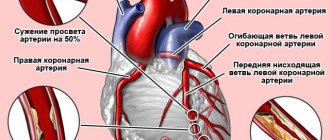Release form and composition
Dosage form - powder for the preparation of a solution for intravenous (IV) and intramuscular (IM) administration: crystalline mass from white with a yellow tint to white (0.5 g or 1 g in 10 ml bottles, in a cardboard a pack of 1 or 12 bottles complete with 1 or 12 ampoules of solvent, respectively, or without them).
The active ingredient of Loraxone is ceftriaxone (in the form of sodium salt), in 1 bottle - 500 or 1000 mg.
Solvent: water for injection, 5 or 10 ml in 1 ampoule.
Patient reviews
Alexey, Rostov, 28 years old: “After a vacation in the mountains, I felt very unwell.
High temperature, cough, sore throat simply did not allow me to live. I turned to the doctor for help. After diagnosing the infection, the ENT prescribed Loraxone injections. He told how to properly prepare the solution and what dose to use. This medicine has proven to be effective and reliable. A week later I was already back to normal. Now I have a package in my home medicine cabinet. You can buy the medicine at any pharmacy, and it’s not that expensive.” Anfisa, Moscow, 35 years old: “A month ago, symptoms of cystitis began to manifest themselves strongly. I tried many different pills, but nothing helped. A friend recommended Loraxone powder. I administered the prepared solution intramuscularly once a day with a dosage of no more than 2 g of the substance. And it helped. The infection cleared up and the constant urge to urinate and pain disappeared. Thank you very much to my friend for the advice.”
Indications for use
The use of Loraxone is indicated for the treatment of diseases caused by microorganisms sensitive to ceftriaxone:
- Meningitis;
- Sepsis;
- Peritonitis, inflammatory pathologies of the biliary tract and gastrointestinal tract;
- Pneumonia and other respiratory tract infections;
- Skin infections;
- Urinary tract and kidney infections;
- Joint and bone infections;
- Gonorrhea and other genital infections;
- Infectious and inflammatory diseases in otolaryngology;
- Infections in patients with reduced immunity.
In addition, the drug is prescribed for the prevention of infections in the postoperative period.
Contraindications
It is strictly prohibited to use this medication in case of hypersensitivity to ceftriaxone or any other cephalosporin.
The drug is contraindicated in premature infants less than 40 weeks of age (taking into account the period of intrauterine development).
Do not give the medicine to full-term newborns who have jaundice, hyperbilirubinemia or acidosis.
If the patient is prescribed medications containing large amounts of calcium to treat a disease, taking Loraxone is also prohibited.
The drug is contraindicated in premature infants less than 40 weeks of age.
Directions for use and dosage
After preparing the solution, the powder is administered intravenously or intramuscularly.
Recommended rules for dissolving and administering the drug:
- IV jet administration: 1 g of powder is diluted in 10 ml of solvent (water for injection), administered slowly over 2-4 minutes;
- IV drip administration: 2 g of powder is diluted in 40 ml of a calcium-free solution (5% or 10% dextrose solution, 5% fructose solution or 0.9% sodium chloride solution), administered by infusion for 30 minutes;
- IM injection: 1 g of powder is diluted in 3.5 ml of 1% lidocaine solution, deeply injected into the gluteal muscle (no more than 1 g of the drug per 1 buttock). Lidocaine solution cannot be administered intravenously!
The dose and period of treatment are prescribed by the attending physician based on clinical indications.
The recommended single daily dosage of Lorakson has age restrictions:
- Patients over 12 years of age: 1-2 g (for infections caused by moderately sensitive pathogens and severe forms of the disease, the dose may be increased to 4 g);
- Children under 12 years of age, including infants: the drug is prescribed at the rate of 0.02-0.075 g per 1 kg of weight; at a dose above 0.05 g per 1 kg of weight, the drug should be administered intravenously over 30 minutes. Adult doses are recommended for children weighing 50 kg or more;
- Newborns under 2 weeks of age: at the rate of 0.02-0.05 g per 1 kg of weight.
In children, including newborns, treatment of bacterial meningitis begins with a daily dose of 0.1 g per 1 kg of weight, the maximum allowable dose is 4 g per day. The dose must be adjusted after isolation of the pathogenic microorganism and determination of its sensitivity. The treatment period depends on the causative agent of the infection:
- Meningococcus – 4 days;
- Haemophilus influenzae (Pfeiffer bacillus) – 6 days;
- Pneumococcus – 7 days;
- Sensitive enterobacteria – 10-14 days.
When treating gonorrhea caused by penicillinase-forming and non-penicillinase-forming strains, a single intramuscular injection of 0.25 g of the drug is prescribed.
To prevent the development of infection during surgery, it is recommended to administer 1-2 g of ceftriaxone once 1-1.5 hours before surgery.
In patients with impaired renal function with creatinine clearance (CK) above 10 ml/min and normal liver function, the dose of ceftriaxone should not be reduced.
In case of severe renal failure (creatinine clearance less than 10 ml/min), the daily dose of Loraxone should not exceed 2 g. In patients after hemodialysis, the dose of the drug should not be changed.
In case of impaired liver function and normal renal function, the dose should not be reduced. It is necessary to regularly monitor the level of ceftriaxone concentration in the blood serum in patients with simultaneous severe pathology of the liver and kidneys.
Pharmacological properties of the drug Lorakson
Pharmacodynamics. Ceftriaxone is an antibiotic of the third generation cephalosporin group with a wide spectrum of antibacterial action. Highly active against most gram-positive and gram-negative bacteria, both aerobic and anaerobic. The mechanism of action is associated with the suppression of the synthesis of bacterial membrane components. Bacteria with a high division rate are highly sensitive to ceftriaxone. Ceftriaxone is resistant to the hydrolytic action of β-lactamases (penicillinases, cephalosporinases) produced by most gram-positive and gram-negative bacteria. Ceftriaxone is active both in vitro and in vivo against the following microorganisms: gram-positive, including Staphylococcus aureus, Staphylococcus epidermidis, Streptococcus pneumoniae, Streptococcus pyogenes (group A β-hemolytic streptococci), Streptococcus agalactiae (group B streptococci), Streptococcus viridans, Streptococcus bovis, Staphylococcus spp. ; Methicillin-resistant staphylococci are resistant to ceftriaxone. Most strains of enterococci are resistant to ceftriaxone; gram-negative , including Aeromonas spp., Alcaligenes spp., Branhamella catarrhalis, Citrobacter spp., Enterobacter spp. (some strains are resistant), Escherichia coli, Haemophilus ducreyi, Haemophilus influenzae, Haemophilus parainfluenzae, Klebsiella spp. (including Kl. pneumoniae), Moraxella spp., Morganella morganii, Neisseria gonorrhoeae, Neisseria meningitidis, Plesiomonas shigelloides, Proteus mirabilis, Proteus vulgaris, Providencia spp., Pseudomonas aeruginosa, Salmonella spp. (including S. typhi), Serratia spp. (including S. marcescens), Shigella spp., Vibrio spp. (including V. cholerae), Yersinia spp. (including Y. enterocolitica) . Treponema pallidum is sensitive to ceftriaxone in vitro and in vivo (in animals). According to clinical data, ceftriaxone is highly effective in the treatment of primary and secondary syphilis. Anaerobic , including Bacteroides spp. (including some strains of B. fragilis), Clostridium spp. (including Cl. difficile), Fusobacterium spp. (except F. mostiferum, F. varium), Peptococcus spp., Peptostreptococcus spp. Most strains of Bacteroides spp . (for example B. fragilis ) producing β-lactamase are resistant to ceftriaxone. Due to the presence of data on in vitro of some bacterial strains, discs containing ceftriaxone are used to determine the sensitivity of microorganisms. Pharmacokinetics. When administered parenterally, it penetrates well into tissues and body fluids and has a high volume of distribution. Ceftriaxone is rapidly absorbed after intramuscular administration and reaches high concentrations in the blood serum. Bioavailability of the drug is 100%. Plasma protein binding - 95%. The volume of distribution is 0.15 l/kg-1. 2–24 hours after a single administration of ceftriaxone at a dose of 50 mg/kg body weight, its concentration in the CSF exceeds the MIC for most meningitis pathogens. With meningitis in children, ceftriaxone penetrates into the CSF, where its concentration is 17% of the concentration in the blood plasma. The half-life is 6–9 hours. Due to the long half-life (on average 8 hours, in children under 8 days of age and in patients over 75 years of age - 2 times longer), the concentration of ceftriaxone 24 hours after administration is higher than the MIC for most microorganisms. The maximum concentration in blood plasma after intramuscular administration is reached after 70–90 minutes. 50% of the drug is excreted unchanged by the kidneys within 48 hours, the rest by the liver. In newborns, about 70% of the drug is excreted by the kidneys.
Side effects
- Digestive system: taste disturbance, nausea, vomiting, constipation or diarrhea, abdominal pain, flatulence, glossitis, pseudomembranous enterocolitis, stomatitis, dysbiosis, liver dysfunction (in the form of increased activity of liver enzymes, rarely - alkaline phosphatase or bilirubin, cholestatic jaundice);
- Hematopoietic system: neutropenia, leukopenia, granulocytopenia, thrombocytopenia, thrombocytosis, lymphopenia, hypocoagulation, hemolytic anemia, prolongation of prothrombin time, decreased concentration of plasma coagulation factors (II, VII, IX, X);
- Urinary system: renal dysfunction (increased urea content in the blood), azotemia, hypercreatininemia, cylindruria, glucosuria, oliguria, anuria, hematuria;
- Allergic reactions: skin rash, itching, hives, fever or chills; rarely - eosinophilia, bronchospasm, serum sickness, polymorphic exudative erythema (including Stevens-Johnson syndrome), anaphylactic shock, angioedema;
- Local reactions: pain along the vein, phlebitis, pain and infiltration at the site of intramuscular injection;
- Other: dizziness, headache, nosebleeds, superinfection, candidiasis.
special instructions
The prescription of the drug should be based on a detailed medical history.
It is necessary to regularly monitor the level of ceftriaxone concentration in the blood plasma in patients with simultaneous severe hepatic and renal failure and patients on hemodialysis.
With long-term therapy, it is necessary to regularly monitor indicators of the functional state of the kidneys and liver, and the picture of peripheral blood.
In rare cases, an ultrasound examination of the gallbladder may reveal transient darkening, which is sometimes accompanied by pain in the right hypochondrium. In this case, the patient should be prescribed additional symptomatic treatment and continue drug therapy.
During the period of use of Lorakson, the consumption of alcoholic beverages is contraindicated.
If anaphylactic shock develops, the patient should immediately be administered intravenous epinephrine, and then a glucocorticosteroid.
When treating elderly and debilitated patients, it may be necessary to prescribe vitamin K.
Given the ability of ceftriaxone to displace bilirubin bound to serum albumin, neonates with hyperbilirubinemia, especially premature infants, should be treated with great caution.
Drug interactions
Despite the synergism between ceftriaxone and aminoglycosides regarding the effect on a significant number of gram-negative bacteria, their simultaneous administration is indicated for severe, life-threatening infections. Considering the physical incompatibility of the drug with aminoglycosides, it is necessary to prescribe them separately in recommended doses.
The drug is incompatible with ethanol.
When Loraxone is combined with platelet aggregation inhibitors, including non-steroidal anti-inflammatory drugs, the likelihood of bleeding increases. When taken together with nephrotoxic drugs (including loop diuretics), the risk of developing nephrotoxicity increases.
The drug should not be mixed in the same syringe or infusion bottle with another antibiotic.
Reviews from doctors
Irina, Samara, 53 years old: “I am an experienced infectious disease doctor. Throughout my work, I have encountered a large number of patients suffering from both mild and severe infections. The use of Loraxone as part of complex treatment therapy has always given good results. The development of the disease was stopped, the symptoms of the disease were eliminated. After taking this drug, people recovered and quickly returned to normal life. You just need to strictly follow the dosage.”
Alexander, Tula, 43 years old: “It is important for a urologist to have a reliable antibiotic drug in service. A large number of diseases of the genitourinary system are caused by infections. The use of Loraxone allows you to effectively counteract them. The drug acts directly on the sites of infection, neutralizing pathogens. I often prescribe the drug to my patients. All that is required of them is to follow the dosage and the usual precautions characteristic of taking any antibiotics.”


